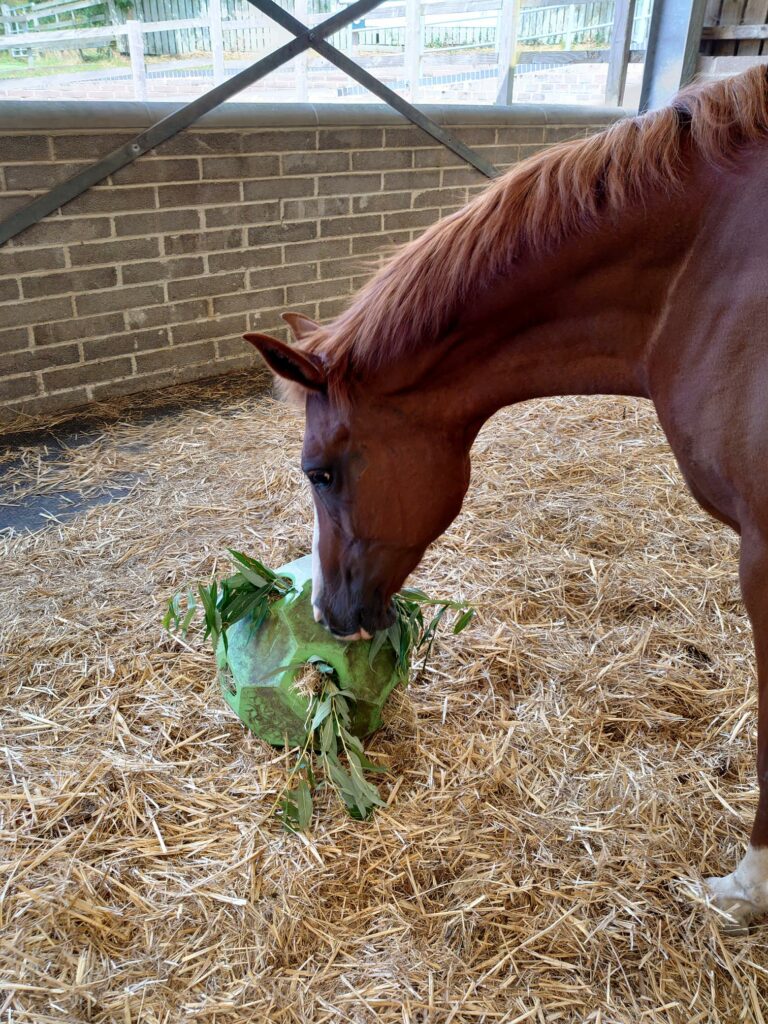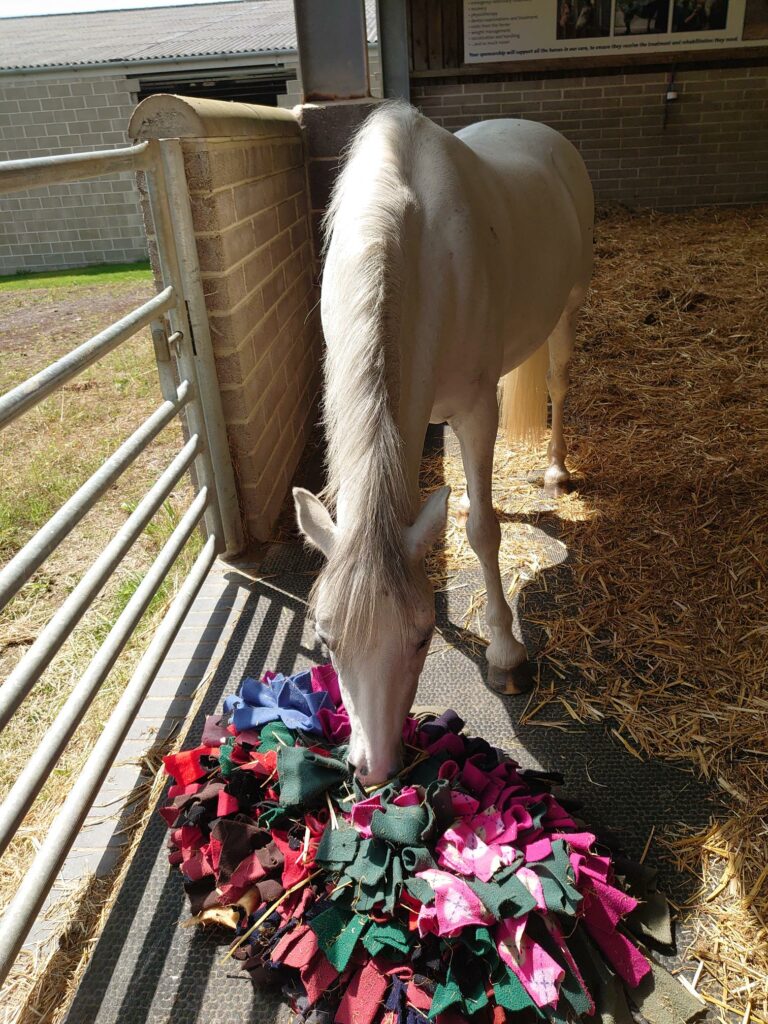You may like to try some of the options suggested below to relieve the boredom of a horse who is stabled, whether it is a management choice or due to box rest. We would always encourage people to turn their horses out as much as possible, but sometimes stabling is unavoidable e.g., recovery from an injury. You can find more advice on whether you should stable your horse here.
Please be aware that not all things will work for all horses – it depends entirely on the individual horse’s personality and the circumstances.
- Make sure your horse can see others nearby. This can be achieved by stables having bars or windows in the walls horses can see and/or interact with their neighbour(s).
- Have a radio on in the background, there is some evidence to suggest horses like classical music played quietly.
- Fit a stable mirror made of horse safe glass.
- Give them some stable toys to play with – a wide variety are available, from those which you fill with feed or treats so the horse can push the toy round to get the food out, to those which you hang from the ceiling.


- Please be aware in the case of toys which are hung up that you will need to take care when moving round the box so that you don’t hurt yourself on them, particularly if they are at head height.
- Bore a hole through a swede or turnip and hang it on a string from the ceiling.
- Horses have evolved to eat for at least 16 hours a day so making sure they have enough to eat can be an excellent way to relieve boredom. See our webinar ‘Promoting positive behaviour through diet’ for tips on how to provide forage in interactive ways for stabled horses.
- If you are worried about their waistline and need to restrict the quantity of food they get, try using a small-holed net to slow down their eating and spread any concentrate feeds out into numerous small feeds through the day.
- Exercise your horse by going for a ride, loose schooling, walking your horse out in-hand or hand-grazing – but only if appropriate and safe to do so. If your horse is on box rest for a medical issue or injury, always seek veterinary guidance before starting to exercise your horse.
- Provide a vitamin/mineral lick or balancer in their feed to ensure they are receiving the correct amount of micro-nutrients essential for normal bodily functions. For more information on how to provide your stabled horse with a balanced diet, check out our feeding horses advice.
- Spend time grooming your horse, this offers companionship, helps create a bond with you and your horse, as well as ensuring their skin and coat is being kept in a healthy condition.
- Your physiotherapist may be able to provide you with simple stretches and massage techniques to help maintain relaxation which could be incorporated into your grooming routine.
Popular advice in Environment

Winter horse care tips
Read our advice on how to care for your horse during winter, including our top ten tips on winter horse care.

Pasture management for horse paddocks
Find out how to manage your paddock for the health of your horse, pasture and soil.
Other advice categories
All webinar categories:
Call our Advice Line
+44 (0)1953 497 238Not found the advice or answer you were looking for here? Then our Advice Line is available during office hours, or you can email us on education@worldhorsewelfare.org to let us know what topics you were looking for.


